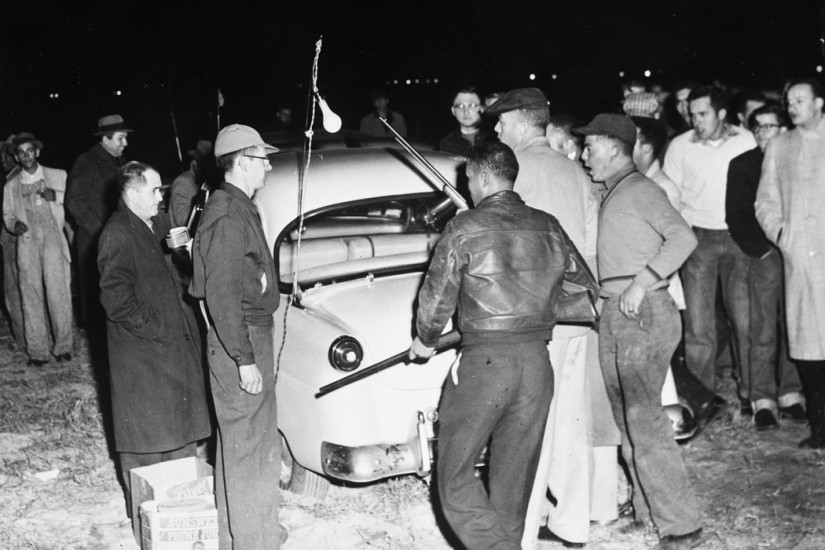Two crosses burned in Robeson County, North Carolina, on January 13, 1958. One was outside the home of a Native American woman who was dating a white man, the other outside the home of a Native family who had moved into one of Lumberton’s all-white neighborhoods. The blazing signs were clearly the work of Klansmen — not that the Ku Klux Klan’s presence in the county had ever been subtle. Caravans of Klansmen had been driving around the segregated county (where the local population included blacks, whites and Native Americans) every Saturday night, terrorizing the Lumbee Indians.
“They wanted you to see them. They wanted you to be afraid of them,” Lillie McKoy, who grew up watching the KKK drive by and later became the mayor of Maxton, a small town in Robeson County, told The Fayetteville Observer in 2008.
The county had been split in three since the 1880s, after the Lumbees resisted North Carolina’s post–Civil War efforts to segregate its citizens into two racial categories. The county had three sets of buses, three separate water fountains and three school systems.
But in the 1950s, things were starting to change in Robeson County, and the Klan wasn’t happy about it. Brown v. Board of Education had recently outlawed school segregation throughout the United States. More locally, the Lumbee Tribe had been formally recognized by the state of North Carolina, and Solicitor Malcolm B. Seawell, a local law officer who would later become North Carolina’s attorney general, had given a speech addressing 15 arrested Klansmen, warning them that Robeson County “would not tolerate” the Klan.
“Your society is neither invisible nor invincible,” Seawell said in his speech to the Klansmen. “You may discover that the easy way or the hard way. Take your choice.”
The KKK chose the hard way.
The latest cross burnings were a precursor to what KKK Grand Dragon James W. “Catfish” Cole hoped would be the Klan’s shining moment, its chance to “put the Indians in their place, to end race mixing.”
A day after the crosses burned, the KKK put up fliers advertising a rally and cross burning at a cornfield near Maxton that Cole had rented from a local farmer.
“There’s about 30,000 half-breeds up in Robeson County and we are going to have some cross burnings and scare them up,” Cole told the Greensboro Daily News.
Thinly veiled tensions created rumors — people said ammunition sales had skyrocketed, leaving stores with scarce supplies. The KKK drove around town, broadcasting racial slurs and promoting their “anti-Indian” rally “in the heart of that mongrelized Indian country.” Lumbee member Clyde Chavis said that the Klansmen’s loudspeaker announcements “blew the lid off all of it.” Suddenly, everyone was involved.
